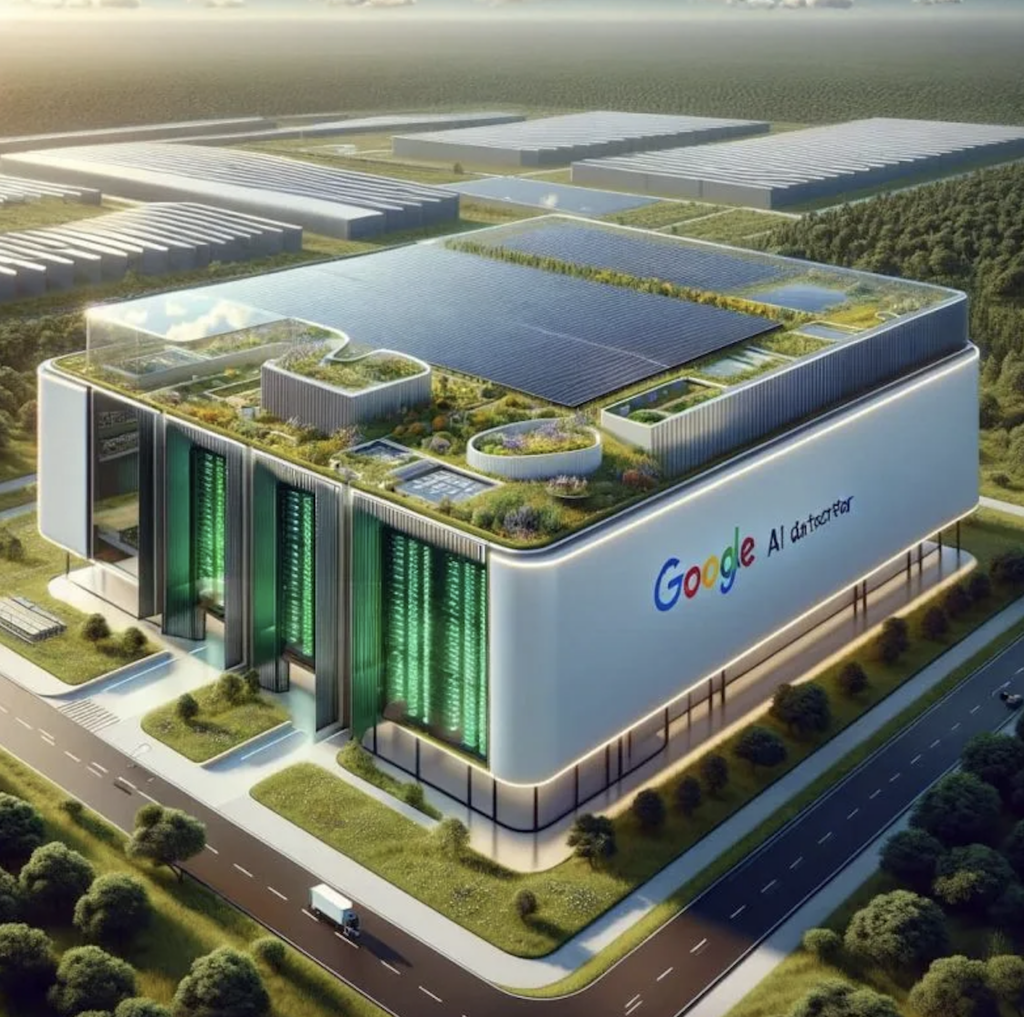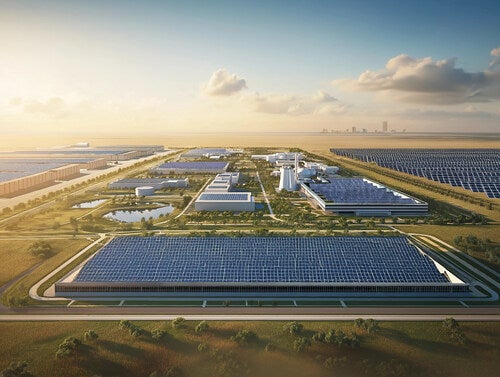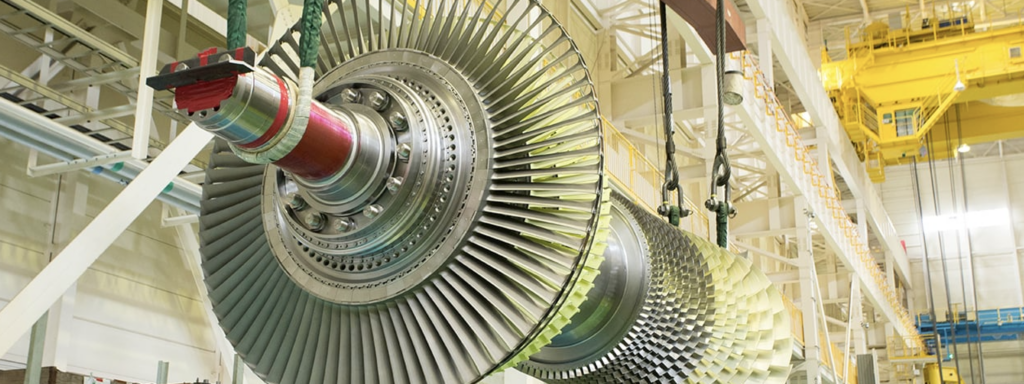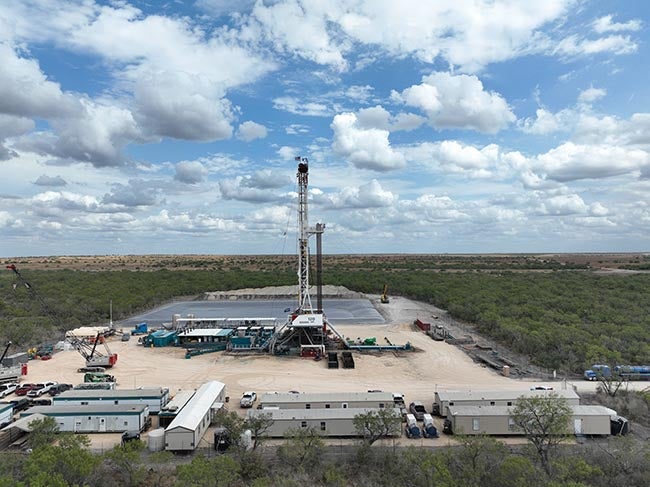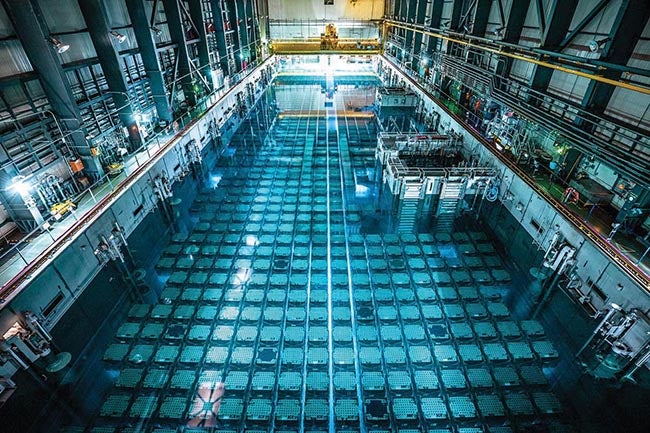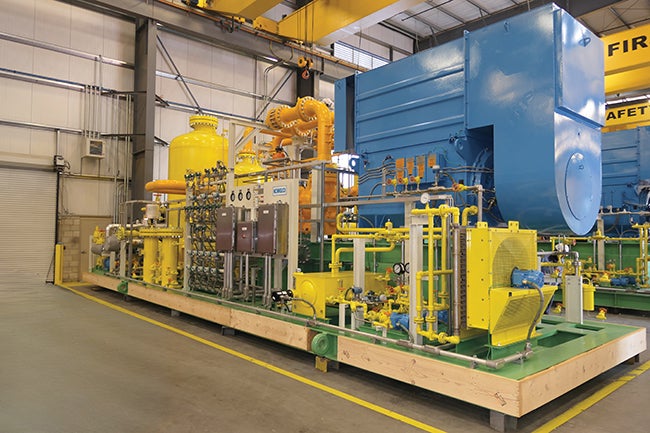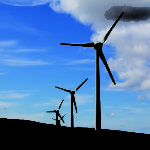Hydropower has evolved through multiple industrial revolutions. Today, the Industrial Internet of Things (IIoT) and Industry 4.0 offer solutions to take the industry to a whole new level. Rules-based analysis, advanced pattern recognition, machine learning, and augmented reality can all help optimize performance and assist operators in achieving greater reliability.
For more than a century, mankind has harnessed the power of falling water. Today, about 16% of the world’s energy demand is met by hydroelectricity, and 71% of all renewable energy is supplied by hydropower. The hydropower industry has evolved significantly across the different industrial revolutions, and knowing from where hydropower came will show where hydropower is going.
The first industrial revolution is marked as a timeframe between the 18th and 19th century when there was a rise in technological developments and inventions. For hydropower, among the various other inventions, the Francis and Pelton turbines stood out, and they remain staples of the hydropower industry today.
In the late 19th century, hydropower took a leap forward when the world’s first hydropower project lit up a single-arc lamp in Northumberland, England. The initial success of hydroelectric was so grand that within a few years hundreds of power plants were in operation worldwide.
The hydro industry continued to power society as it steadily moved on with its gears, levers, and pulley systems. As nearly a century passed unchanged, computers helped the third industrial revolution begin to take shape, known as the digital revolution, which began in 1980 and continues today. This time period led to advancements that converted machines from analog to digital systems. The hydropower industry started integrating information and communication technologies in its power plants and energy grids. This is when automation and digital governor controls began to take shape.
The fourth industrial revolution is the next step forward, building on top of the digital and all previous industrial revolutions. How can this transformational opportunity be defined?
The Next Step: IIoT and Industry 4.0
The “Industrial Internet of Things” (IIoT), more commonly known as the Industrial Internet, refers to the network of industrial devices connected to the internet. These devices use sensors and embedded software to collect, share, and analyze data. It is a combination of cyber-physical systems, IIoT devices, and cloud computing (Figure 1), all of which are combined to help make industrial processes smarter.
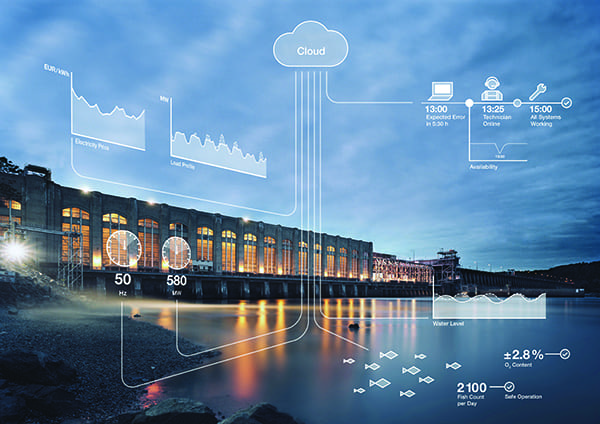 |
|
1. By utilizing cloud computing, operators can monitor plant parameters remotely, reducing manpower demands. Courtesy: Voith |
IIoT technologies allow machines to communicate autonomously with other machines, enabling them to identify trends and actionable insights from historical and real-time data. This allows factories, energy providers, and other industrial ventures to become increasingly automated as unmanned plants. Similar to how smart thermostats or light switches control temperature and light based on real-time data at home, IIoT technologies allow utilities in the hydropower industry to leverage data and optimize multiple aspects in power plants.
This significant change marks the beginning of the fourth industrial revolution, Industry 4.0.
The Challenges of Today’s Hydropower Industry
The current market dictates that there is an increasing demand for energy and an increasing number of energy sources, both renewable and non-renewable. With an overall rise in competition, these market variables tell us that the worldwide market is requiring greater flexibility, adaptability, responsiveness, and precision from hydropower providers.
More specific challenges faced by the hydropower industry include:
- Equipment Life. Aging power plants have resulted in a surge in maintenance costs. Cost pressure within the energy market has led some operators to reduce maintenance efforts, resulting in equipment operating longer than previously anticipated. This scenario has and will continue to lead to millions of dollars in catastrophic failures and unplanned downtime.
- Lower-Cost Competitors. New extraction methods in the fossil fuel industry have greatly reduced their operating costs. Other low-cost renewable energy sources (such as wind and solar) have also taken hold on the market. Both of these alternatives have influence over the overall energy prices, which hydropower must evaluate to remain competitive.
- Environmental and Legal Challenges. Constructing a new hydropower plant in today’s market requires years of permits, environmental studies, and large cost overheads. These obstacles can be difficult for hydropower providers to overcome. An increased focus on environmental impact has also added a level of complexity.
With the above challenges present for hydropower providers, now more than ever it is of utmost importance to have plans to reduce cost while also extending equipment life. As an initial cost-reducing effort the energy sector embraced automation technologies to help reduce manpower. This is demonstrated by power plants that are already controlled or operated remotely.
At unmanned plants, software algorithms control many processes at the remote push of a button, including startup and shutdown processes. While this reduction in manpower is a direct cost benefit to hydropower providers, the next steps to reducing cost involves tackling two main challenges. They are:
- Equipment Life. Hydropower plants need an effective maintenance schedule.
- Lower Cost Competitors. Hydropower plants need to optimize operational parameters.
Both of these challenges can be addressed using IIoT technologies—if one understands how to implement them.
Tackling Hydropower Maintenance Techniques
There are four maintenance techniques providers can use to maintain their equipment. These include:
- Reactive Maintenance. This technique involves performing maintenance after equipment failure. It is categorized by high repair cost, low prevention cost, and long downtime.
- Preventative Maintenance. This technique involves performing maintenance based on a schedule. It is categorized by low repair cost, high prevention cost, and medium downtime.
- Predictive Maintenance. This technique involves performing maintenance based on equipment condition. It is categorized by low repair cost, low prevention cost, and low downtime.
- Proactive Maintenance. This technique is a combination of reactive, preventative, and predictive maintenance, and it typically involves root cause failure analysis of component failures.
Overall, the hydro industry has been slow to adapt and continues to use the most-dated approaches for maintenance—reactive or preventative maintenance.
Reactive maintenance for hydropower can be categorized by the unplanned downtime providers face when failures, such as bearing wipes, runner cracks, and auxiliary equipment failure occur. This downtime is costly, especially if a provider does not have other units to compensate for the interruption. It can also result in government fees. The repair cost associated with this equipment is also larger than if the component had been dealt with earlier.
For preventative maintenance, schedules are created based on historical inspections and maintenance is performed on a given cycle. Repairing or replacing components after a fixed amount of time typically is not necessary and results in unused equipment life.
In some instances, preventative maintenance programs apply route-based analysis. Route-based analysis entails visiting machinery for data collection at regular, pre-selected time intervals (typically monthly, quarterly, semi-yearly, or yearly). While periodic checks can detect probable failures and can allow some condition-based maintenance, it is time consuming and often data is collected but never reviewed by qualified personnel. Studies also indicate that up to 30% of potential failures are missed between route cycles.
It is time for hydropower to embrace IIoT solutions and move from reactive to proactive maintenance through the collection and application of real-time data.
Optimization for Hydropower 4.0
The first step to IIoT implementation has already been untaken by many in the hydro industry. This first step is data collection 24x7x365, which has been achieved by several different types of online monitoring systems. Measurements of temperature, pressure, vibration, and other parameters occur at localized sensors, which are transformed into time-waveform signals and reviewed by plant operators.
The amount of data transmitted for qualitative analysis is roughly estimated to be 3.5 terabytes of data per year at a typical hydro plant. The processing of this massive volume of data is further hampered by the fact that these systems are typically “island systems” that are isolated from each other. For example, vibration data is typically visualized through standalone software with alarms based on industry standards. Combining vibration data with other information is unlikely because it is typically stored until further evaluation can be conducted. The solution? Allow the data to be organized and prioritized by automated processing.
The benefit of the IIoT solution is that it takes previously separated data and combines it into one centralized and organized location using software applications. For the purely organizational side of utilities, asset management software combines all the best features of previous calendar-, spreadsheet-, project-, and planning-based software packages. These applications help utilities organize by plant, unit number, and equipment. They allow utilities to determine what assets are due for upcoming maintenance and let users order spare parts in preparation for the work. The best of these tools go one step further by combining real-time and historical plant operational data, such as headwater/tailwater levels, power output, unit rotational speed, vibration, and other information.
This integration of drawings, data, and information in one location creates a virtual replica of the hydropower plant, also known as a “digital twin.” This digital twin is another IIoT advancement, and it can take different forms for different hydroelectric providers. For some, it is strictly historical data collected from the machine operation. For others it incorporates more-complex features, such as coupling the data with 3-D models of turbine components. In any case, once this digital twin is created it is up to the IIoT to sort through and prioritize the data.
IIoT software solutions offer many tools and techniques to sort through the data. They include:
Rules-Based Analysis. Software algorithms automate tasks that specialists would typically perform. An example of this would be a rule that looks at vibrational data to determine mass unbalance. The rule would automatically comb through data looking for large values in the 1X rpm frequency spectrum and a zero-degree phase difference between outboard and inboard vertical or horizontal measurements. Any measurements that would be flagged by the software would then be passed along for expert analysis.
Advanced Pattern Recognition (APR). Software algorithms categorize historical data to look for slight variations in what is classified as normal operational data. For example, this solution is being applied to acoustical analysis in some hydro plants. Microphones are placed in unmanned hydro plants as a replacement for technicians, who previously walked machines to listen for abnormal noises. These microphones create machine-specific sound profiles and send an alarm anytime there is a variation from normal sound levels. Though this is a new IIoT application, it has already been proven to detect abnormalities, including headwater level changes and generator unbalance.
Machine Learning. This is not necessarily its own definitive solution, but more of a combination of the other tools mentioned. It is then applied to many hydroelectric plants, utilities, and other involved parties. While rules and APR are looking at the day-to-day data of hydro plants, machine learning looks at the bigger picture, taking a holistic view of all assets. Machine learning looks at data from a bearing wipe at Hydro Plant A in Europe, and helps predict the potential for the same failure at Hydro Plant B in South America. Machine learning also looks at data from profitable Hydro Plant A and recommends optimization techniques for Hydro Plant B.
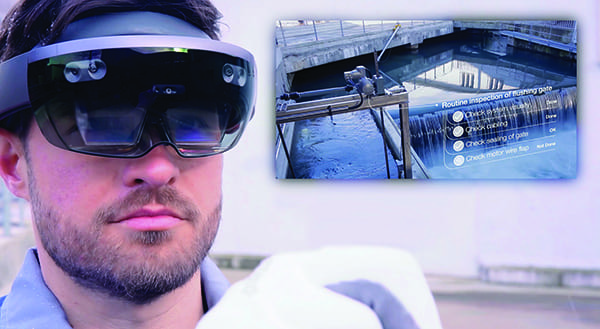 |
|
2. Augmented reality allows workers the opportunity to train for and visualize a task prior to performing the actual work. Courtesy: Voith |
Augmented Reality. These applications are a new way to use existing technologies for many different scenarios. One application would be to virtually train personnel on maintenance procedures/techniques prior to performing the actual physical labor (Figure 2). It can also be used in the field to review equipment design drawings, operating parameters, and historical maintenance logs without personnel returning to an office desk.
As laid out above, these asset management tools, digital twins, and data analytics that make up the IIoT platform are designed to help users incorporate predictive and proactive maintenance into their routines. The last and possibly most critical step to IIoT connectivity is taking all of this data, know-how, and expertise, and establishing a way to quickly and easily share the information worldwide.
The IIoT provides this global sharing solution via cloud platforms. One goal of the cloud platforms is to help users access information quickly via mobile or handheld devices, instead of storing information locally at the plant. With ease of access comes security and privacy needs. IIoT solutions can guarantee this security using both hardware and software solutions. Flow of plant data can be guaranteed in one direction (from plant to the cloud) and encrypted to the same level of security as banking financial transactions. Once this safe transfer of data to the cloud occurs, it can be used to optimize hydroelectric plants across the globe.
The ability to leverage IIoT infrastructure and capabilities in the hydropower industry appear limitless. It can help accomplish real-time tracking of river resources, monitoring power generation in turbines, and potentially help visualize the distribution of energy across the grid. The only remaining question is where will IIoT and Industry 4.0 take hydropower next?
The IIoT Future
With the digital solutions presented above, assets have been organized and data has been evaluated. Operators have the tools to monitor the overall system condition. They can allocate resources to address issues as they are predicted and before component failure. They can also adjust machine parameters to optimize output. By implementing IIoT solutions, the hydropower industry can already optimize their maintenance processes, cut costs, plan, and visualize upgrades.
Looking to the future with the IIoT, the connectivity and collection of data allows for further evaluations of hypothetical applications for hydropower plants. One application could be to evaluate modifying equipment versus installing new equipment, and then determine the best use of budget in exchange for best performance. Another application could monitor environmental factors, such as weather forecasts or wildlife health, to help operators determine when there should be an adjustment in plant operations. With the IIoT, the power plants of the future will even enter “auto-pilot” mode where subtle changes occur based on real-time and historical data, just as a thermostat turns on heat based on real-time temperature information.
The IIoT and Industry 4.0 are moving the hydropower market into the future. The only remaining question is will your hydropower facilities move into the future with it? ■
—Patrick S. Skidmore is a condition-monitoring system expert with Voith, Prashanth Shivakumar is a product manager with Voith Digital Ventures, and Brent T. Ward is global IoT business development manager with Voith Digital Ventures.


